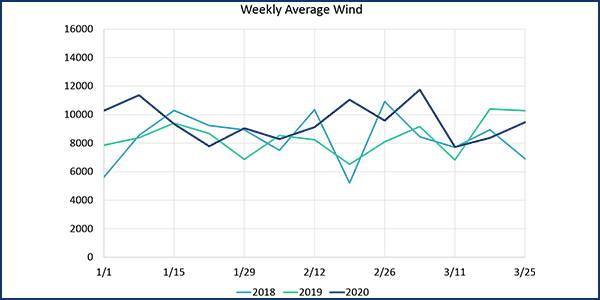SPP CEO Barbara Sugg assured stakeholders that the RTO is taking very careful steps to reopen while the COVID-19 pandemic still rages, making clear it will be a slow process.
“We don’t want a flood of people back in the office,” Sugg said during the Joint Quarterly Stakeholder briefing April 27.
She said SPP must first see a 14-day downward trajectory of cases in Arkansas, where it is based. “That hasn’t happened yet,” she said.
As of Thursday, Arkansas had more than 3,200 confirmed cases of COVID-19. Almost 1,300 of those cases have recovered, but 59 Arkansans have died. Sugg said no employees have tested positive for the virus.
The downward slope of confirmed cases is just one trigger SPP must meet before allowing its 622 employees to return to its Little Rock headquarters. Staff will return in five phases, 20% of the employees at a time.
“We’re in no hurry. This conservative approach to returning to the office will be extremely critical,” Sugg said. “We’re not calling it [return to work]. We’re calling it return to office. We’re not really working from home. We’re really working from about 500 different places.”
SPP Extends Wind, Renewable Penetration Marks
Bruce Rew, senior vice president of operation, backed off recent statements that wind could become SPP’s No. 1 source of generation in 2021.
“If we keep up the way we’re going, wind may be our No. 1 resource in 2020,” he said.
Rew was speaking several hours after the grid operator set new records for wind and renewable penetration. Both records came at 1:24 a.m. CT on April 27, with wind accounting for 73.2% of the fuel mix and renewables for 78.2%.
Rew said SPP has enough wind generation to exceed an 80% penetration level but that 75% might be more realistic. He said wind energy’s low prices would dampen more traditional generation forms, increasing its share of the fuel mix.
SPP has 22.7 GW of wind registered in its market. Wind output in the first quarter was up from the previous year.
Asked whether there is an upper limit to the amount of wind generation SPP can provide, Rew said, “As long as we have the resources to manage reliability, there’s no upper limit.”
Maintenance Outages Being Deferred Until Winter
COO Lanny Nickell said some member companies are deferring generator maintenance activities that would normally take place in the spring.
“We’re performing analyses to understand the implications of canceled and deferred outages, and we’ll share that information with our members so they can take precautionary actions and develop more informed plans,” Nickell said. “We expect to have excess generation capacity in winter 2021, which gives some headroom to take more outages then.”
SPP has seen a continued drop in load, with a reduction of between 5 and 7% for the week of April 19, as compared to historical load patterns.
FERC Makes Accommodations for COVID-19
FERC Relaxing Deadlines, Enforcement.)
The Office of Enforcement is postponing all previously scheduled audit site visits and investigative testimony. Technical conferences scheduled through May will be conducted via conference call or webinars, or postponed, and settlement conferences will continue through conference calls, Clarey said. Schedules will be posted to the FERC calendar.
Clarey said FERC’s 1,400 employees are working safely from home.
RSC Endorses Z2 Credits’ Elimination
The Regional State Committee met virtually for a brief discussion before the quarterly update, taking time to unanimously endorse a revision request (RR 401) that ran into opposition from renewable and independent generation developers before the Markets and Operations Policy Committee. (See “SPP MOPC Briefs: April 14, 2020,” MOPC Approves 2nd Run at Z2 Credits Elimination.)
The change eliminates Z2 revenue credits for sponsored transmission upgrades, replacing them with incremental long-term congestion rights (ILTCRs). EDF Renewable Energy again complained that SPP’s version of ILTCRs is “woefully inadequate” and not as “robust” as those in other markets.
Kansas Corporation Commissioner Shari Feist Albrecht told the group that the RSC and Organization of MISO States’ Seams Liaison Committee (SLC) hopes to conclude its work by the end of the year. The committee, composed of regulators from both RTOs’ states, have been working for almost two years on improving the grid operators’ interregional planning processes and other seams issues.
The SLC has scheduled a conference call on May 11 to review reports and studies from the RTOs’ market monitors. SPP’s Market Monitoring Unit has produced a study on coordinated transaction scheduling and Monitor Casts Doubts on MISO-SPP CTS Benefits.)
KCC staffer Christine Aarnes told the RSC that the Cost Allocation Working Group plans to bring a white paper on a proposed byway facility cost allocation review process to the committee’s July meeting for its approval.
Noting there is more generation than load in some areas, Aarnes said, “Byway facilities intended for local traffic are being used for highway traffic to export that energy.”
The CAWG is working on the Holistic Integrated Tariff Team’s recommendation to evaluate a narrow process through which 100- to 300-kV regionally funded byway project costs can be fully allocated on a region-wide basis. The review includes new and existing facilities under Schedule 11 of the Tariff.






